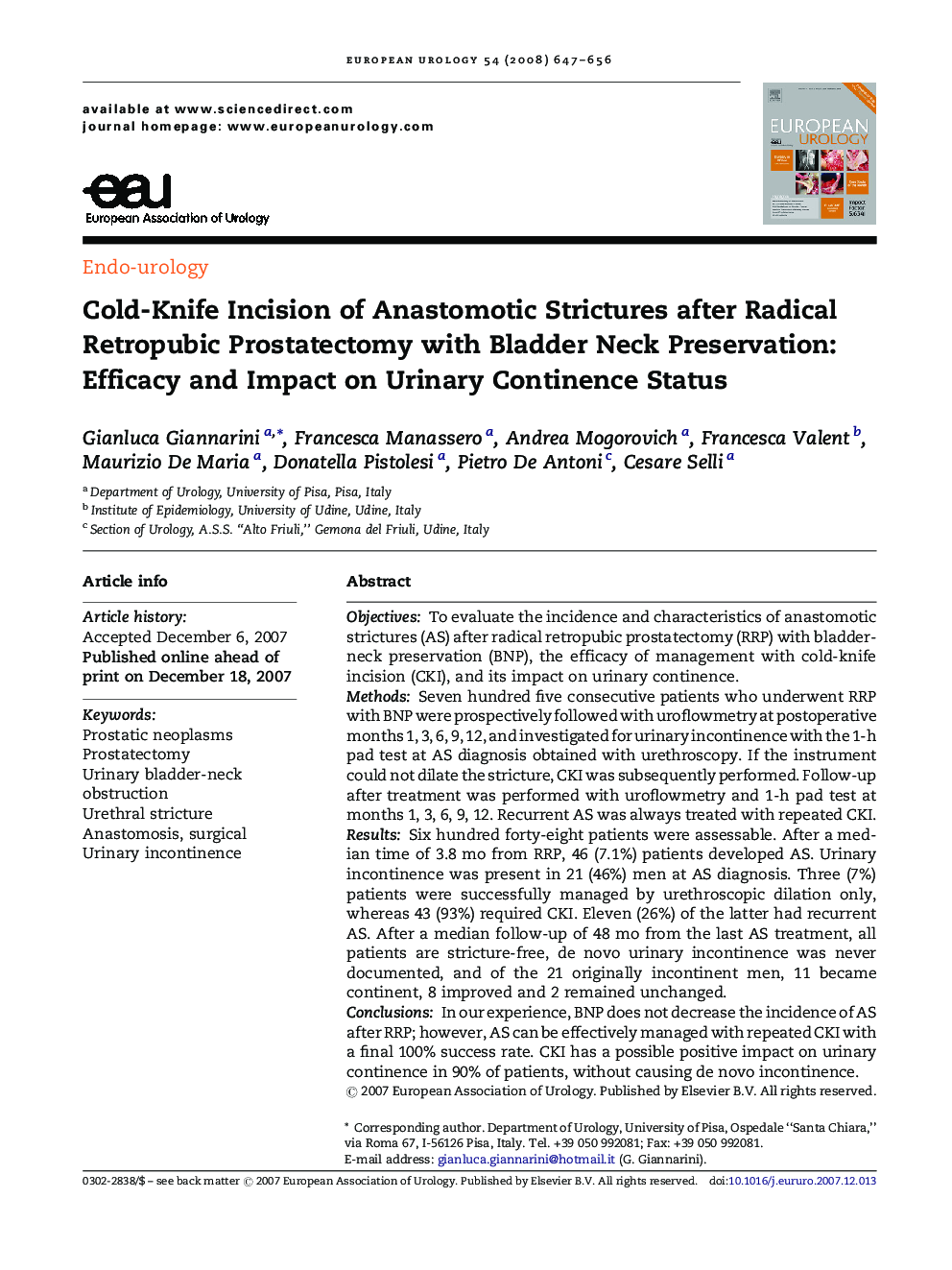| کد مقاله | کد نشریه | سال انتشار | مقاله انگلیسی | نسخه تمام متن |
|---|---|---|---|---|
| 3929223 | 1253217 | 2008 | 10 صفحه PDF | دانلود رایگان |

ObjectivesTo evaluate the incidence and characteristics of anastomotic strictures (AS) after radical retropubic prostatectomy (RRP) with bladder-neck preservation (BNP), the efficacy of management with cold-knife incision (CKI), and its impact on urinary continence.MethodsSeven hundred five consecutive patients who underwent RRP with BNP were prospectively followed with uroflowmetry at postoperative months 1, 3, 6, 9, 12, and investigated for urinary incontinence with the 1-h pad test at AS diagnosis obtained with urethroscopy. If the instrument could not dilate the stricture, CKI was subsequently performed. Follow-up after treatment was performed with uroflowmetry and 1-h pad test at months 1, 3, 6, 9, 12. Recurrent AS was always treated with repeated CKI.ResultsSix hundred forty-eight patients were assessable. After a median time of 3.8 mo from RRP, 46 (7.1%) patients developed AS. Urinary incontinence was present in 21 (46%) men at AS diagnosis. Three (7%) patients were successfully managed by urethroscopic dilation only, whereas 43 (93%) required CKI. Eleven (26%) of the latter had recurrent AS. After a median follow-up of 48 mo from the last AS treatment, all patients are stricture-free, de novo urinary incontinence was never documented, and of the 21 originally incontinent men, 11 became continent, 8 improved and 2 remained unchanged.ConclusionsIn our experience, BNP does not decrease the incidence of AS after RRP; however, AS can be effectively managed with repeated CKI with a final 100% success rate. CKI has a possible positive impact on urinary continence in 90% of patients, without causing de novo incontinence.
Journal: European Urology - Volume 54, Issue 3, September 2008, Pages 647–656